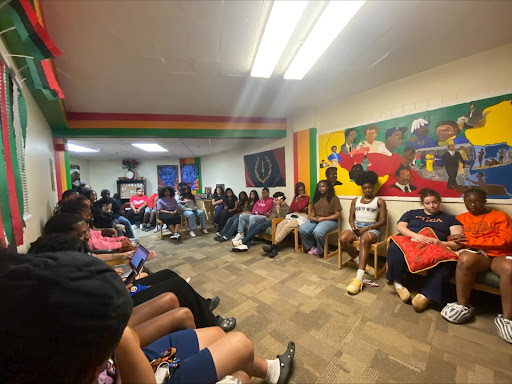
The Health and Wellness Center launched a new campaign this summer called the Red Folder program. The initiative provides a way for faculty and staff to better assist students who may be showing signs of distress.
The program originally started at the University of California in 2012 and since then has reached universities across the country. It was brought into Utica University before the start of the fall semester after reports that faculty and staff seemed “kind of lost” when it came to responding to the mental health of students.
“It was started to give faculty and staff a simpler way to help students that are in crisis,” said Maria Klosek, a clinical counselor at the Health and Wellness Center. “We did some research over the summer and saw that this program was at universities all over the country, so it made sense to bring it here to Utica University.”
The folder is structured in three main parts: recognize, respond and refer. Faculty and staff can recognize signs of distress through different indicators such as behavioral, cognitive, emotional and physical signs.
“The big thing with the folder is the three R’s,” Klosek said. “I think for a lot of staff, especially if you’re not too well versed on mental health and different symptoms that someone may display when in distress, you might not be able to recognize it. So, that’s the first step, recognizing the different ways that a student can be in distress.”
“If a student is acting out of the norm, it probably means that something’s going on,” she added.
After recognizing the situation, faculty and staff must respond proactively and in ways that show support for the student. While it might seem “pretty simple to respond,” the Red Folder provides a detailed guide to responding both calmly and directly.
“A lot of times we’ve heard that some professors have had students come to their offices and just broken down,” Klosek said.
When addressing concerns for a student’s health, faculty and staff can follow a simple, color-coded guide to help them refer students to the proper resources.
“There’s different levels to the crisis. Green might mean you’re not really concerned about the student so you refer them to the Health and Wellness Center,” Klosek said. “We have the referral online, it’s totally anonymous.”
The decision guide progresses from low to high concern. The middle yellow box signals an uncertainty about the student’s wellness, which warrants a call to the Health and Wellness Center. The final box in red is for students in immediate need or danger, in which faculty and staff should call 911 or campus safety.
In both yellow and red cases, a report should be made from the staff member to the Behavioral Intervention Team or BIT.
According to Ariel Rios, executive director of the Health and Wellness Center, BIT is composed of different campus leaders who work together to connect students to the proper resources.
“We meet as a team,” Rios said. “Members of the campus community like the dean, campus safety and [Student Living and Campus Engagement], and students can be brought up in the Behavior Intervention Team to make sure that they’re linked to appropriate support.”
In addition to the Red Folder program, the Health and Wellness Center offers free and confidential counseling services. To access the Red Folder PDF and learn more about the campaign, visit the drop-down menu at www.utica.edu/directory/health-and-wellness-center.








































































































































